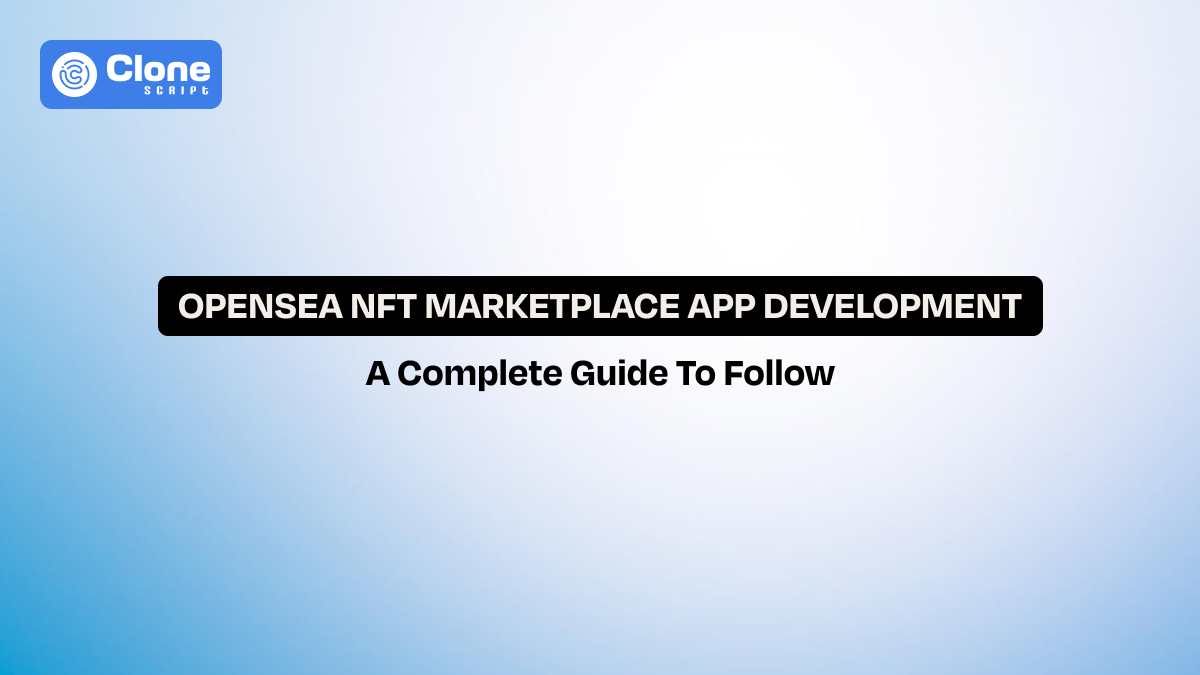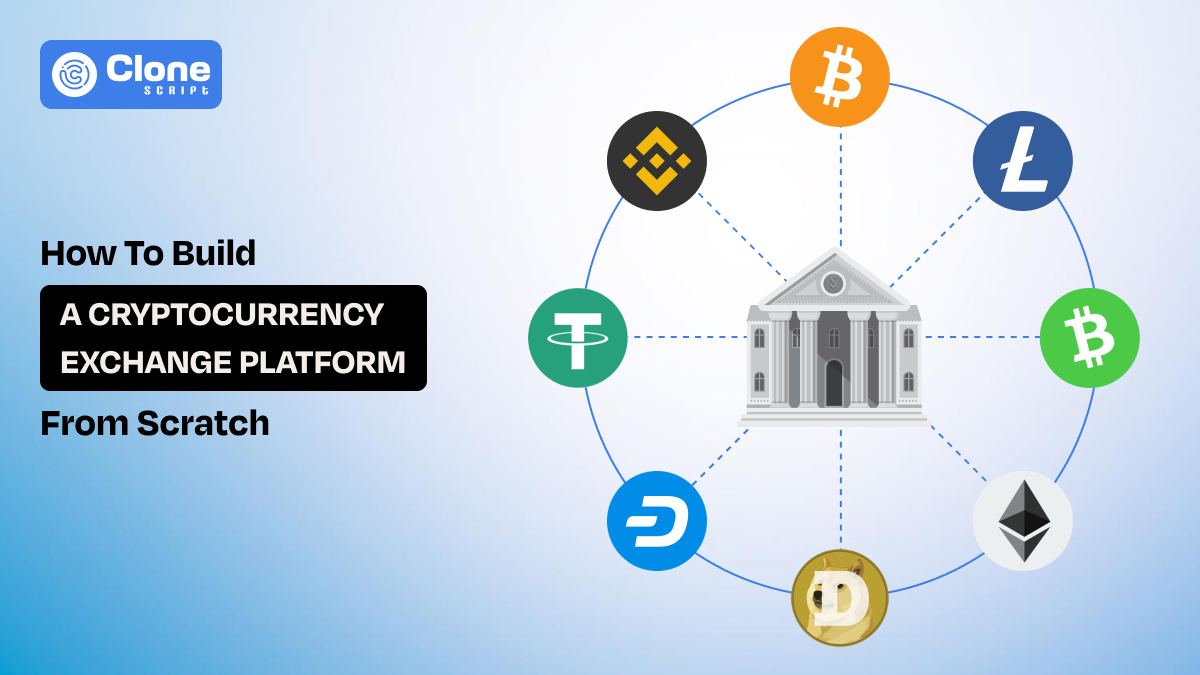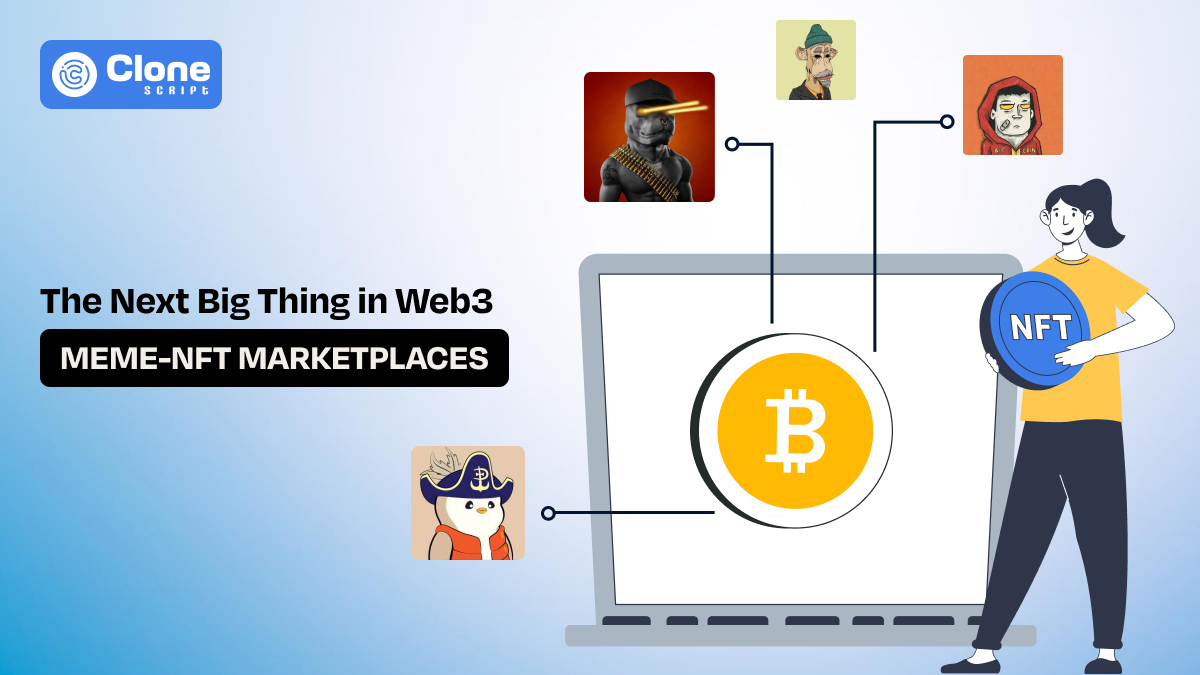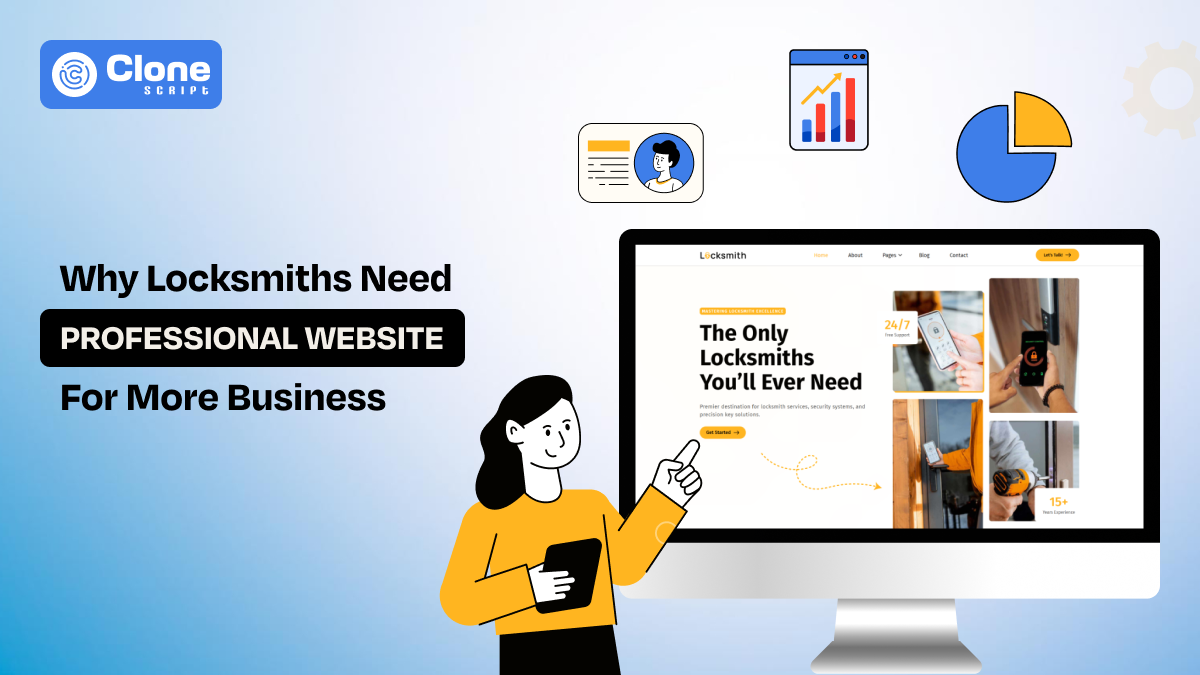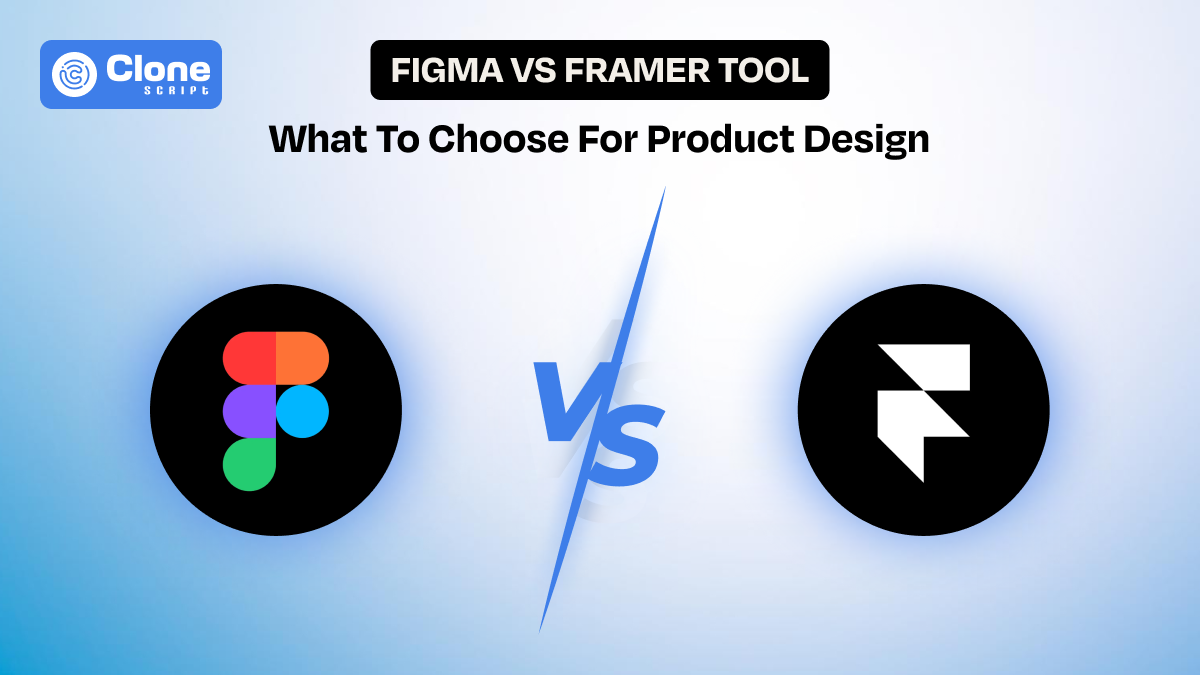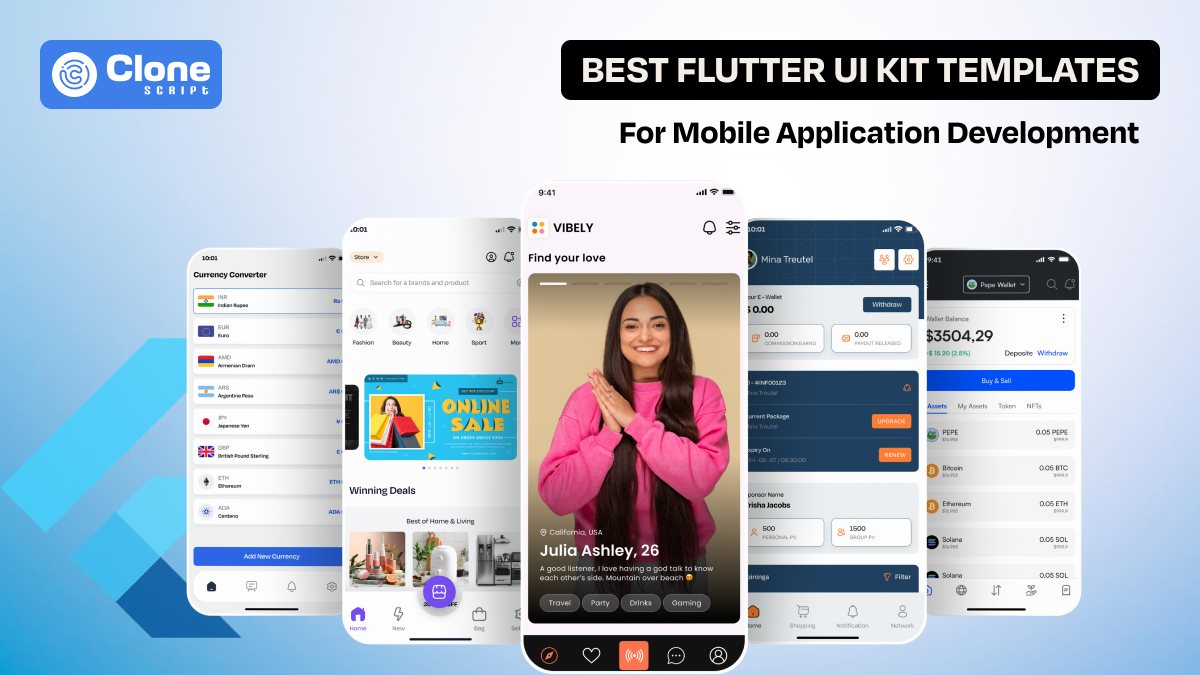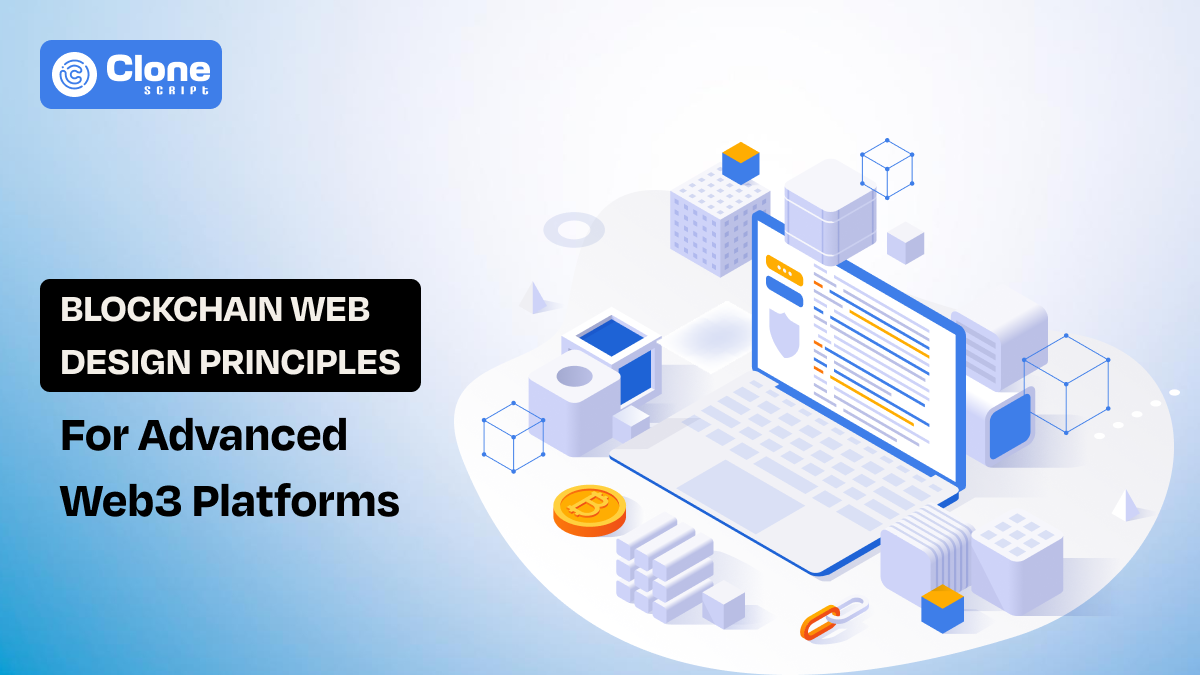How to Create an NFT Marketplace App Like OpenSea
In 2017, a small startup called OpenSea quietly launched an online marketplace for something few people understood, digital collectibles known as Non-Fungible Tokens (NFTs). After a few years of hard work with intelligence and advanced technology, OpenSea became a billion-dollar company that reshaped how creators, investors, and brands interact with digital ownership.
What started as a niche experiment in crypto art has now transformed into a revolution in digital commerce. And behind every NFT ecosystem, one crucial element works— a marketplace platform that connects creators with collectors.
That’s where your opportunity begins.
If you’ve ever imagined running your own version of OpenSea — one tailored to your brand, niche, and community- this is the time.
In this guide, you’ll learn how to create an NFT marketplace app like OpenSea. We’ll cover everything from what NFTs are to the roadmap to build one that stands out using a white-label NFT platform script. This guide will help you make informed, confident decisions in NFT app development.
Ready to build the next big thing in digital ownership? Let’s begin.
Before we dive into the technicalities of building an app like OpenSea, it’s essential to understand the foundation — the NFT.
What Is NFT?
NFT stands for Non-Fungible Token. In simple terms, it’s a digital certificate of ownership stored on a blockchain. Unlike cryptocurrencies such as Bitcoin (BTC) or Ethereum (ETH), where each coin is identical and interchangeable, NFTs represent unique digital assets that cannot be replicated or exchanged on a one-to-one basis.
In other words, an NFT is a digital deed that verifies the originality and ownership of a specific item. This item could be:
-
A piece of digital art
-
A music track or album
-
A gaming asset like a sword, skin, or collectible card
-
A virtual land plot in a metaverse
-
A digital version of a real-world asset, like a house deed or event ticket
Each NFT comes with metadata (name, description, creator info, traits, and asset link) and a unique token ID stored on a blockchain — usually using standards like ERC-721 or ERC-1155 on Ethereum.
Real-World Relevance.
The initial NFT growth between 2021 and 2022 might have been speculative, but what grew from it is a sustainable digital economy built on verifiable ownership. In 2025, NFTs are finding a stronger presence in sectors like:
-
Gaming (in-game items, digital collectibles of Web3 technology)
-
Music (royalty sharing and fan tokens)
-
Fashion (digital wearables and luxury authentication like AR and VR)
-
Real Estate (tokenized property assets)
So, at its core, thinking NFT is just a digital artwork, you’re misguided. It’s a programmable digital asset with transparent ownership and real-world value.
And where these assets are traded, displayed, and discovered — that’s where NFT marketplaces come in. It can be explored in the next section.
What Is an NFT Marketplace?
An NFT marketplace is the central hub where digital assets are created, bought, sold, and traded. Think of it as the Amazon or eBay of NFTs, but instead of physical goods, it deals with digital collectibles and blockchain-verified assets.
For any business owner or entrepreneur stepping into the Web3 space, understanding how an NFT marketplace operates is crucial — because this is where your users will interact, transact, and ultimately define the success of your platform.
The Core Function of an NFT Marketplace
At its simplest, an NFT marketplace acts as a connecting ladder between creators and collectors. It provides the digital infrastructure that handles every stage of an NFT’s lifecycle — from creation (minting) to trading and ownership transfer.
Here’s what happens inside a typical NFT marketplace platform:
-
User Onboarding: Users connect their crypto wallets (like MetaMask or WalletConnect) to access the marketplace.
-
Minting NFTs: Creators upload digital files, add metadata (title, description, traits), and mint NFTs. It means they’re officially recorded on the blockchain as unique tokens.
-
Listing & Selling: NFTs can be listed for sale at a fixed price or via auction. The marketplace displays all active listings, allowing buyers to browse, filter, and purchase.
-
Transactions: When a buyer purchases an NFT, the marketplace executes a pre-set up smart contract that transfers ownership while recording the transaction on the blockchain.
-
Royalties & Secondary Sales: Every time that an asset is resold, the original creator can earn a pre-defined royalty percentage, automatically distributed via smart contracts.
-
Search & Discovery: The platform offers filters, categories, and recommendation algorithms to help users find NFTs that match their interests.
-
Admin & Compliance: Behind the scenes, there’s an admin panel to manage users, moderate content, monitor suspicious activity, and maintain compliance with local regulations.
But you have a question: what kind of marketplaces exist there? Let’s find.
4 Types of NFT Marketplaces
Different NFT marketplaces serve different purposes, and knowing these distinctions helps when you plan to build an NFT marketplace that fits your target audience.
-
Open Marketplaces: Platforms like OpenSea or Rarible allow anyone to mint, buy, or sell NFTs across multiple categories and blockchains.
-
Niche Marketplaces: These platforms are designed to focus on specific industries, like gaming (Axie Marketplace), art (Foundation), or music (Sound.xyz). It tends to attract highly engaged communities.
-
Exclusive/Curated Marketplaces: Invite-only platforms that emphasize high-quality drops or vetted creators. These appeal to premium brands and collectors seeking exclusivity.
-
White-Label / Enterprise Marketplaces: Custom-built platforms for companies or creators who want to launch their own branded NFT ecosystem under full control. Using a white-label NFT marketplace platform comes with advantages like a cost-effective approach and a quick market launch.
Every NFT trading platform has a working model that manages the entire operation smoothly and with enhanced security.
The Business Model Behind NFT Marketplaces
From a revenue perspective, NFT marketplaces generate income through:
-
Transaction Fees: A small percentage (usually 1–5%) is charged on every sale.
-
Listing Fees: A fixed charge for creators to list their assets on the platform.
-
Featured Promotions: It's just like taking the help of Google ads and getting paid visibility for high-value collections.
-
Memberships or Subscriptions: To access premium features, real-time analytics, or minting benefits membership or subscription plan method is acceptable.
-
Tokenomics: Some platforms issue their own governance or utility tokens to encourage participation in asset minting and trading.
This structure creates a self-sustaining digital economy—where every trade benefits both users and the platform itself.
Why Marketplaces Matter for the NFT Ecosystem?
Thinking NFT marketplaces are just transaction platforms, so stop it. These platforms are community engines that drive user engagement, creator visibility, and liquidity in the digital asset world. Without them, NFTs would remain static entries on a blockchain with no discoverability or trading mechanism.
In short, an NFT marketplace is the main ingredient of the NFT economy, connecting creativity with commerce and turning blockchain innovation into a real-world opportunity.
Now, you know what these digital assets trading platforms are and their work mechanism. It’s a time to explore OpenSea’s work structure.
Understanding How the OpenSea App Works
To build an NFT marketplace app like OpenSea, it helps to study how the leading platform operates. OpenSea is widely recognized as the largest NFT marketplace globally, and understanding its architecture, features, and user experience can provide valuable insights for business owners and entrepreneurs planning their own platform.
OpenSea’s Core Concept
OpenSea launched in 2017 as a peer-to-peer (P2P) marketplace for NFTs. It allows creators to mint NFTs, list them for sale, and connect directly with buyers. OpenSea’s platform is blockchain-agnostic, supporting multiple chains, which enables a broad range of digital assets and cross-chain trading.
Key aspects that define OpenSea’s operation include:
-
Decentralized Ownership via Smart Contracts
Every NFT listed on OpenSea is backed by a smart contract on the blockchain. Ownership, transfers, and royalties are automatically enforced via these contracts, reducing reliance on intermediaries.
-
Lazy Minting (Gasless Option)
OpenSea introduced lazy minting. From there, creators list their NFTs without paying upfront gas fees. The NFT is minted at the moment of purchase and lowering the barrier to entry for creators.
-
Royalties and Secondary Sales
Creators can define a royalty percentage. It helps them earn a commission each time their NFT is resold. This mechanism incentivizes high-quality creation and ongoing participation.
-
Wallet Integration
Users connect their wallets (e.g., MetaMask, Coinbase Wallet) to manage assets, make purchases, and receive royalties. OpenSea’s seamless wallet experience reduces frustration for new users entering the NFT ecosystem.
-
Search, Discovery, and Filtering
OpenSea provides advanced search options, filters by category, traits, collection, and pricing. This discovery engine enhances user engagement, and buyers can find NFTs matching their preferences.
-
Transaction Management
On the OpenSea platform, off-chain order books handle bids and listings, while final settlements occur on-chain. This hybrid model balances speed, cost-efficiency, and security for the NFT creator and buyer.
-
Revenue Model
OpenSea charges a 2.5% commission on every transaction. Additional monetization comes from premium listings, partnerships, and optional service fees.
-
Cross-Chain Capability
This platform aggregates listings from multiple blockchains, including Ethereum, Polygon, Solana, and others. This helps a wider variety of assets to be displayed and attracts a larger user base.
-
Community and Governance Features
OpenSea encourages a community through curated drops, featured collections, and collaboration with brands and creators. Users depend on the platform not only for trading but for discovery and engagement within the NFT ecosystem.
Why OpenSea Works Better than Others?
OpenSea’s success is a combination of trust, usability, and network effects:
-
It provides secure, blockchain-backed ownership.
-
The NFT marketplace app user interface design is simple and intuitive, reducing the learning curve for newcomers.
-
Liquidity attracts liquidity: A high volume of users and listings optimized to make ongoing trading activity uninterrupted.
-
Creator incentives like royalties and gasless minting keep supply dynamic and diverse.
By analyzing OpenSea, we can identify:
-
Essential features to replicate in an MVP.
-
Opportunities for differentiation, such as niche targeting, improved UX, or specialized tokenomics.
-
Technical and operational strategies for scaling a marketplace.
Understanding OpenSea is about learning the principles that make a marketplace functional, reliable, and engaging. These insights form the foundation for building your own NFT marketplace platform.
Why Build an NFT Marketplace Like OpenSea?
For business owners and entrepreneurs, understanding the strategic value of creating an NFT marketplace app is just as important as understanding the technology behind it. The NFT ecosystem has matured significantly since its early days, and the opportunity to build a platform that supports creators, attracts collectors, and generates revenue is still very real.
1. Full Ownership and Control
When you build your own marketplace, you control every aspect of the platform:
-
Revenue streams: Decide transaction fees, listing fees, or subscription models.
-
User experience: Tailor the interface, discovery features, and minting process to your audience.
-
Brand identity: Your marketplace becomes a branded ecosystem rather than relying on a third-party platform.
Unlike simply selling NFTs on an existing platform, owning a marketplace ensures you capture value at every touchpoint.
2. Monetization Opportunities
These marketplaces can generate revenue in multiple ways:
-
Transaction commissions: Charge a percentage on every sale.
-
Listing or minting fees: Monetize the act of listing assets on your platform.
-
Premium services: Offer analytics, featured listings, or enhanced tools for creators.
-
Tokenization and in-platform currencies: Encourage users to engage with your marketplace ecosystem.
With these approaches, your NFT marketplace can change into a sustainable business model rather than relying solely on speculative trading.
3. Niche Market Potential
While OpenSea dominates the general NFT market, there is still significant untapped potential in niche verticals:
-
Gaming assets and in-game collectibles
-
Music and entertainment rights
-
Digital fashion and virtual wearables
-
Real-world asset tokenization
By targeting a niche, you can attract highly engaged users and differentiate your platform from generic marketplaces.
4. Community Building and Network Effects
NFT marketplaces become successful on network effects: the more creators and collectors you attract, the more valuable the platform becomes. Understand that by building a marketplace, you’re not just facilitating transactions, you’re creating a community:
-
Engaged creators supply high-quality digital content.
-
Active collectors increase liquidity and trading volume.
-
Brand partnerships and exclusive drops can get visibility and adoption.
5. First-Mover Advantage in Emerging Markets
Although OpenSea leads globally, many regions and industries remain underserved. Launching a marketplace today allows you to:
-
Capture early adoption in specific regions or verticals.
-
Build loyalty among creators and collectors before competitors enter.
-
Experiment with innovative features like cross-chain support, tokenized memberships, or exclusive drops.
6. Strategic Benefit Beyond NFTs
Owning an NFT marketplace platform can also position your business for broader Web3 opportunities:
-
Integration with metaverse platforms
-
NFT-based loyalty or membership programs
-
Partnerships with gaming, music, and creative industries
-
Potential to issue a native utility token for platform governance or incentives
In short, building an NFT marketplace is beyond just a technical project. In other words, it’s a strategic business initiative that offers control, revenue, community engagement, and long-term growth opportunities.
By understanding why a platform like OpenSea succeeded, you can replicate its principles while adding unique features that fit your brand, niche, and target audience.
Knowing OpenSea’s work mechanism is one thing, and understanding what to focus on for an NFT trading mobile app development is important..
Step-by-Step Guide to Building an NFT Marketplace App Like OpenSea
Building an NFT marketplace app requires careful planning, technical expertise, and a clear roadmap. This section outlines a step-by-step approach for business owners and entrepreneurs looking to launch a platform that is secure, scalable, and user-friendly.
Step 1: Conduct Market Research & Define Your Niche
Before development begins, understand the market opportunities and define your unique position.
-
Identify target users: Decide what target audience will support your platform, including artists, gamers, collectors, and brands.
-
Analyze competitors: Conduct a thorough competitor research and SWOT analysis. Explore OpenSea, Rarible, Magic Eden, and niche marketplaces.
-
Determine monetization strategies: Wisely optimize what kind of revenue model is useful for the platform, is commissions work, listing fees are helpful, or premium features support.
-
Evaluate legal requirements: Understand the legal work before launching the platform. Implement KYC/AML, copyright rules, and follow NFT regulations in your jurisdiction.
Outcome: A clear NFT marketplace platform concept with a defined audience, value proposition, and compliance strategy.
Step 2: Choose the Right Blockchain & Standards
Selecting the best blockchain for an NFT app is important. After all, the success and platform adoption rate define how carefully the blockchain network completes the transactions. Here are some common blockchains that can be used for:
-
Ethereum – Ethereum is the most popular blockchain for NFTs due to its deep liquidity and widely supported token standards, including ERC-721 for unique NFTs and ERC-1155 for semi-fungible assets.
-
Polygon or Layer-2 solutions – Polygon offers low transaction fees and fast confirmations. This makes it a strong choice for a multi-category NFT marketplace that wants scalability and Ethereum compatibility.
-
Solana – The Solana blockchain is known for high throughput, handling tens of thousands of transactions per second. While cross-chain transactions require external bridges, it is considered a top platform for a rapidly growing NFT ecosystem.
-
Other chains (Flow, Avalanche, Tezos) – For a niche NFT marketplace, blockchains like Flow, Avalanche, and Tezos are attractive options due to their lower transaction costs and efficient NFT support compared to Ethereum or Solana.
Tip: Consider multi-chain support for broader asset compatibility and better user adoption.
Step 3: Define Core Features (MVP & Beyond)
A successful NFT marketplace app should include the essential features for a minimum viable product (MVP):
-
User wallet integration (MetaMask, WalletConnect). Allows buyers and sellers to securely connect their Web3 wallets to the app for transactions and ownership verification.
-
Minting & listing NFTs. Enables creators to generate digital assets and put them up for sale in the marketplace.
-
Buying, selling, and auction mechanisms. Provides users with options to purchase NFTs at fixed prices or participate in competitive bidding.
-
Royalty enforcement & secondary sales. Ensures creators automatically earn a percentage of resale profits each time their NFT changes hands.
-
Search, filters, and discovery tools. Helps users quickly find relevant NFTs based on traits, categories, or collections.
-
Profiles & collections. Let users showcase their owned or created NFTs and organize them into collections for visibility.
-
Admin panel for moderation & analytics. Allows platform administrators to manage users, monitor transactions, and gather insights for optimization.
Advanced features to consider later:
-
Multi-chain interoperability. It supports multiple blockchains to expand asset variety and reach more users.
-
Lazy minting / gasless minting. It lets creators list NFTs without paying upfront blockchain fees, reducing entry barriers.
-
Tokenomics / native token integration. Introduces a platform token to reward users, govern the ecosystem, or drive engagement.
-
Fractional ownership or staking. This enables NFTs to be split into shares or staked for additional utility or passive income.
-
Social and community features. Builds engagement through following, commenting, sharing, or collaborative experiences.
Outcome: A feature blueprint that balances core functionality with future scalability.
Step 4: Plan the NFT Marketplace App Tech Stack
A solid tech stack ensures reliability, security, and performance. This step usually defines the technical development side work. But as an entrepreneur, you have to know that typical components include:
| Layer |
Technology |
Purpose |
|---|---|---|
|
Frontend |
React.js / Next.js, Swift UI (iOS), Kotlin (Android) |
User interface |
|
Blockchain |
Solidity (Ethereum), Rust (Solana) |
Smart contracts for minting, trading, and royalties |
|
Backend |
Node.js, Django, or Go |
API, server logic, transaction processing |
|
Database< /td> |
PostgreSQL, MongoDB |
User data, NFT metadata |
|
Storage |
IPFS, Arweave |
Decentralized media storage |
|
Wallet Integration |
Web3.js, ethers.js |
Blockchain communication |
| Infrastructure |
AWS / GCP / Azure, Kubernetes |
Scalable hosting |
|
Security |
OpenZeppelin libraries, smart contract audits |
Safe and reliable contracts |
Outcome: A well-structured architecture that supports scalability and long-term growth.
Step 5: Develop Smart Contracts
Smart contracts form the work mechanism of any NFT marketplace platform. Consider the following:
-
Minting contracts (ERC-721, ERC-1155)
-
Royalties and resale logic
-
Auction and bidding mechanics
-
Secure and audited code to prevent hacks.
Tip: Use OpenZeppelin frameworks and conduct external audits for security assurance.
Step 6: Design UX/UI for Web and Mobile
This step involves app UI design and UX optimization tasks:
-
Create intuitive onboarding flows for creators and collectors
-
Ensure simple minting and trading processes.
-
Optimize for desktop and mobile devices.
-
Include visual highlights: collections, traits, and trending NFTs
-
Design tips for NFT marketplace app design: focus on clarity, speed, and discoverability
Outcome: A polished user experience that attracts both creators and collectors.
Step 7: Backend & Indexing Implementation
This step ensured the backend development is top-notch and managed properly:
-
Listen to blockchain events and index transactions
-
Cache NFT metadata for faster access
-
Provide analytics dashboards for creators and admins.
-
Ensure smooth search and filtering functionalities.
Outcome: Efficient, scalable, and reliable backend supporting NFT trading.
Step 8: Launch Testnet & Beta
Before launching the NFT marketplace app, the Beta program helps you to find any costly errors to may occur:
-
Deploy smart contracts on testnets (Rinkeby, Polygon Mumbai, Solana Devnet)
-
Invite early users for testing.
-
Collect feedback and fix usability, performance, or security issues
Outcome: A stable, tested version ready for mainnet launch.
Step 9: Mainnet Deployment & Go-to-Market
Once the app is tested well and ready to go live, the mainnet deployment becomes an important part and includes the following tasks:
-
Deploy smart contracts and backend on mainnet
-
Launch web and mobile apps
-
Onboard creators and collectors via marketing campaigns
-
Introduce initial drops, incentives, and promotions.
Outcome: Your NFT marketplace app is live and operational.
Step 10: Post-Launch Optimization
To make the NFT trading app successful, consider managing the tasks in terms of growth:
-
Monitor analytics and user behavior
-
Implement new features based on demand.
-
Optimize gas fees and transaction speeds.
-
Ensure compliance and content moderation.
Outcome: A growing, sustainable marketplace with high engagement.
Estimated Cost and Timeframe to Build an NFT Marketplace App
Understanding the investment and timeline required for business owners planning to enter the NFT space. Costs for the NFT marketplace app vary depending on platform complexity, blockchain choice, team expertise, and features.
-
Factors Affecting NFT Marketplace App Development Cost
Several key factors influence the cost to create a functional app:
-
Platform Type: Web-only, mobile-only, or both (iOS and Android).
-
Features: Basic MVP vs. advanced features like multi-chain support, tokenomics, or fractional ownership.
-
Blockchain Selection: Ethereum gas fees are higher; Layer-2 or alternative chains reduce costs.
-
Design Complexity: Custom UI/UX increases development time and cost.
-
Development Team: Hiring an experienced NFT app development company may cost more upfront, but it reduces risks and offers quality.
Next, check the estimated costs.
-
Approximate Cost Breakdown
| Component |
Cost Estimate (USD) |
|---|---|
|
UI/UX Design |
$5,000 – $15,000 |
|
Frontend Development |
$15,000 – $40,000 |
|
Backend Development |
$20,000 – $50,000 |
|
Smart Contracts & Blockchain Integration |
$10,000 – $30,000 |
|
QA & Testing |
$5,000 – $15,000 |
|
Project Management & Miscellaneous |
$5,000 – $15,000 |
|
Total Estimated Cost |
$60,000 – $165,000 |
Note: Costs can fluctuate depending on region, team size, and blockchain choice. Using white-label solutions or NFT marketplace templates can reduce development expenses significantly.
3. Estimated Timeframe
The development timeline depends on the scope and complexity of your project:
-
MVP with core features: 3–5 months
-
Full-featured marketplace with advanced functionalities: 6–9 months
-
Ongoing maintenance and updates: Continuous
Tips to Reduce Time and Cost:
-
Start with an MVP and gradually add advanced features
-
Use pre-built website templates or white-label marketplace scripts.
-
Focus on a niche audience initially before scaling
4. Key Takeaway
Building an NFT marketplace is a significant investment, but careful planning, phased development, and using modern tools can make it manageable. A realistic budget and timeline help business owners align resources and expectations for a successful launch.
Looking for a smart solution? At AllClone Script, we are offering you to get your NFT app ready in weeks through a white-label solution.
NFT Mobile App SwiftUI: Launch Your Marketplace in Weeks
Presenting the NFT Marketplace Mobile App, developed using SwiftUI, offers a comprehensive white-label solution to swiftly establish your NFT marketplace. Designed for iOS, it provides a user-friendly interface and robust features to facilitate seamless NFT transactions.
Key Features
-
NFT Minting & Listing: Empower creators to mint and list NFTs effortlessly.
-
Wallet Integration: Supports MetaMask and WalletConnect for secure transactions.
-
Live Bidding: Enable real-time auctions for dynamic trading experiences.
-
Advanced Search & Filters: Allow users to discover NFTs based on various criteria.
-
Profile Management: Users can manage their profiles and track their activities.
-
Admin Panel: Comprehensive tools for marketplace management and analytics.
What’s Included
-
Backend Developments
-
Firebase Design
-
App UI - Figma
-
App Source Code - IOS
-
Admin Panel - Web
Why Choose AllClone Script?
-
Rapid Deployment: Launch your marketplace in a fraction of the time compared to custom development.
-
Cost-Effective: Significantly reduce development costs with a ready-made solution.
-
Customizable: Tailor the app to your brand and specific requirements.
-
Secure & Scalable: Built with robust security features and scalability in mind.
For a detailed walkthrough and to see the app in action.
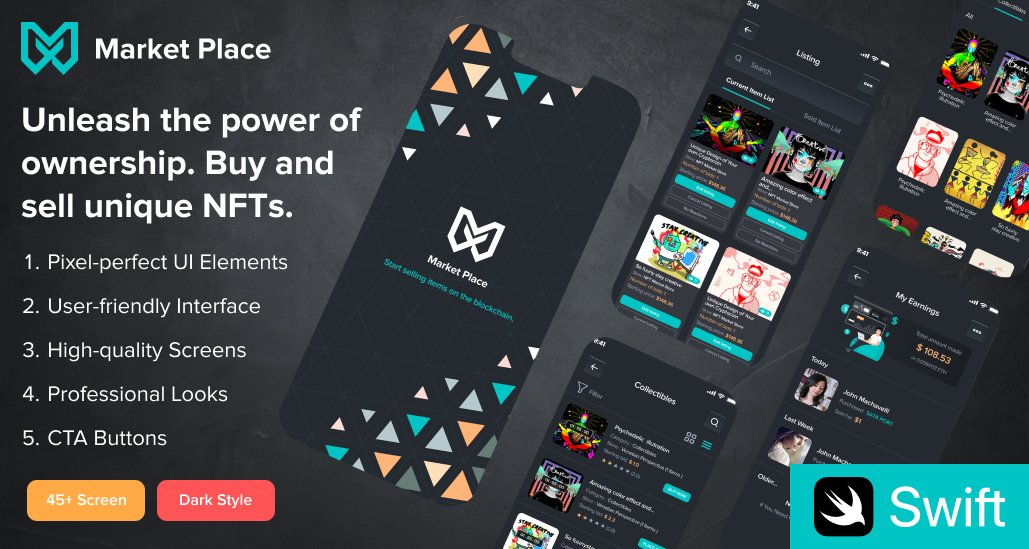
Conclusion
Building an NFT marketplace app like OpenSea offers entrepreneurs a strategic opportunity to enter the growing digital asset ecosystem. A step-by-step approach — from market research and blockchain selection to smart contracts, UX design, and testing — ensures a scalable and sustainable product. Using white-label solutions like AllClone Script’s NFT App Swift UI can accelerate launch, reduce costs, and provide essential features out of the box. With careful planning and execution, your app can unlock new revenue streams and foster vibrant digital communities.
FAQs
-
What frontend technology is used to build an NFT marketplace app?
For NFT marketplace frontend app development, we typically use React.js, Next.js, SwiftUI (iOS), or Kotlin (Android) for responsive, fast, and user-friendly interfaces across web and mobile platforms.
-
Which backend technologies power the NFT app?
Backend frameworks like Node.js, Django, or Go handle API management, transactions, data storage, and smart contract communication for reliability, scalability, and secure NFT operations.
-
What blockchain is best for NFT marketplace apps?
Ethereum, Polygon, Solana, Flow, or Tezos are popular choices. Ethereum offers deep liquidity, while Polygon or Solana provides low fees and faster transactions for seamless trading.
-
How are NFTs stored and retrieved in a marketplace?
NFTs use decentralized storage solutions like IPFS or Arweave for media, while metadata and ownership are maintained on the blockchain for security and transparency.
-
How are smart contracts implemented in digital asset trading marketplaces?
Smart contracts, built with Solidity (Ethereum) or Rust (Solana), automate minting, trading, royalties, and auctions, ensuring secure, trustless transactions without intermediaries.
-
What tools are used for wallet integration?
NFT apps integrate MetaMask, WalletConnect, or Coinbase Wallet using Web3 libraries to securely manage user wallets, allow transactions, and confirm NFT ownership.
-
How is search and discovery handled in NFT marketplaces?
NFT marketplaces implement filters, categories, and metadata-based search algorithms to help users quickly find assets by traits, collections, or price.
-
How do marketplaces ensure security and compliance?
They use audited smart contracts, HTTPS protocols, KYC/AML processes, and admin moderation to protect transactions, user data, and comply with NFT regulations.
 BTC - Bitcoin
BTC - Bitcoin
 USDTERC20 - USDT ERC20
USDTERC20 - USDT ERC20
 ETH - Ethereum
ETH - Ethereum
 BNB - Binance
BNB - Binance
 BCH - Bitcoin Cash
BCH - Bitcoin Cash
 DOGE - Dogecoin
DOGE - Dogecoin
 TRX - TRON
TRX - TRON
 USDTTRC20 - USD TRC20
USDTTRC20 - USD TRC20
 LTC - LiteCoin
LTC - LiteCoin

